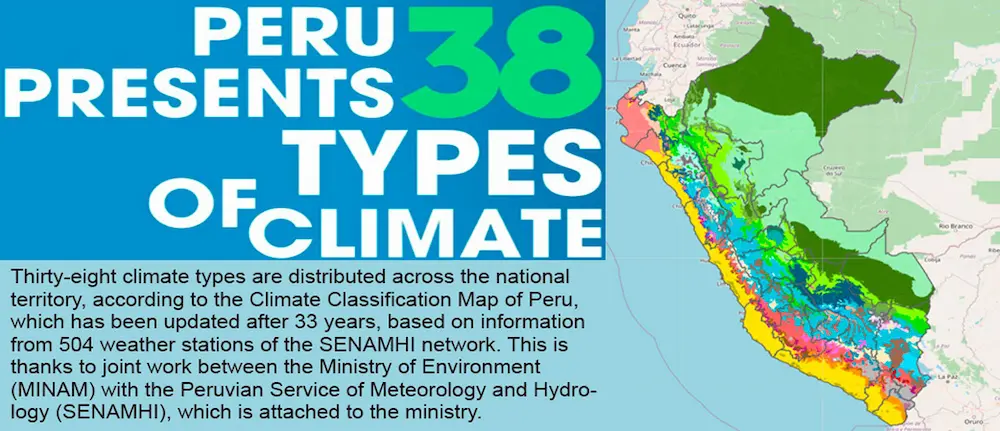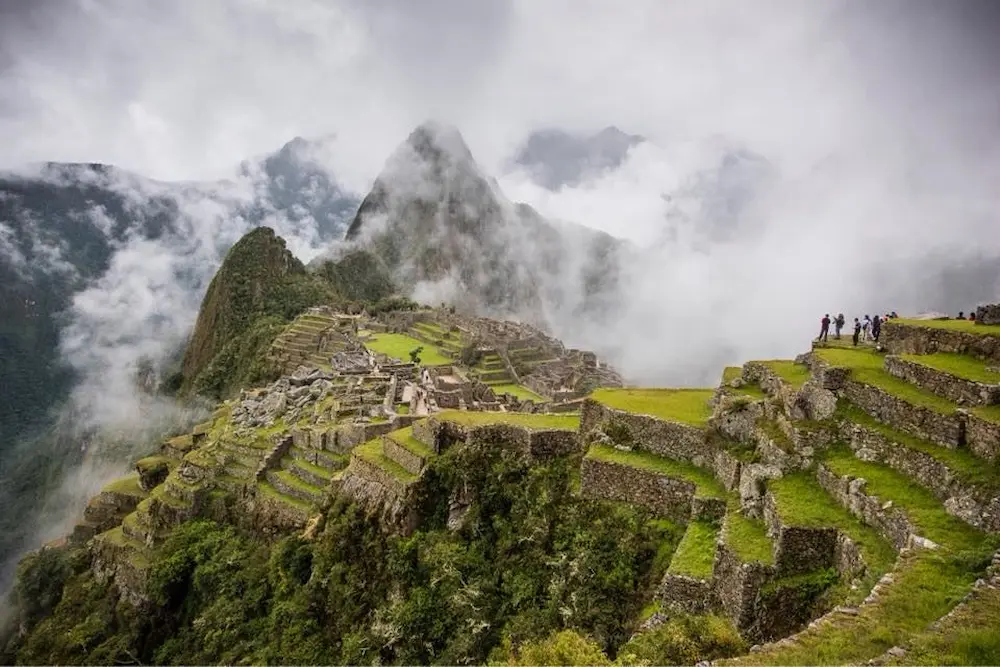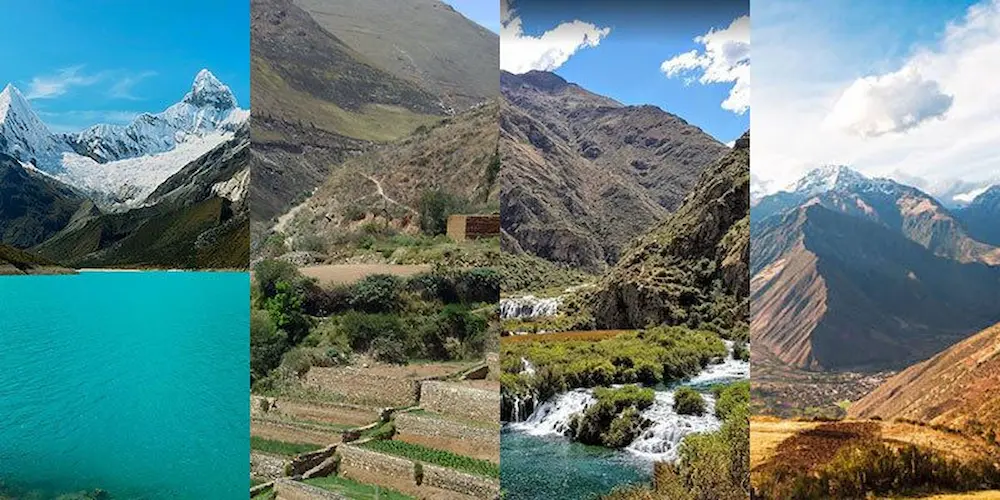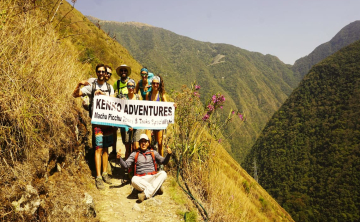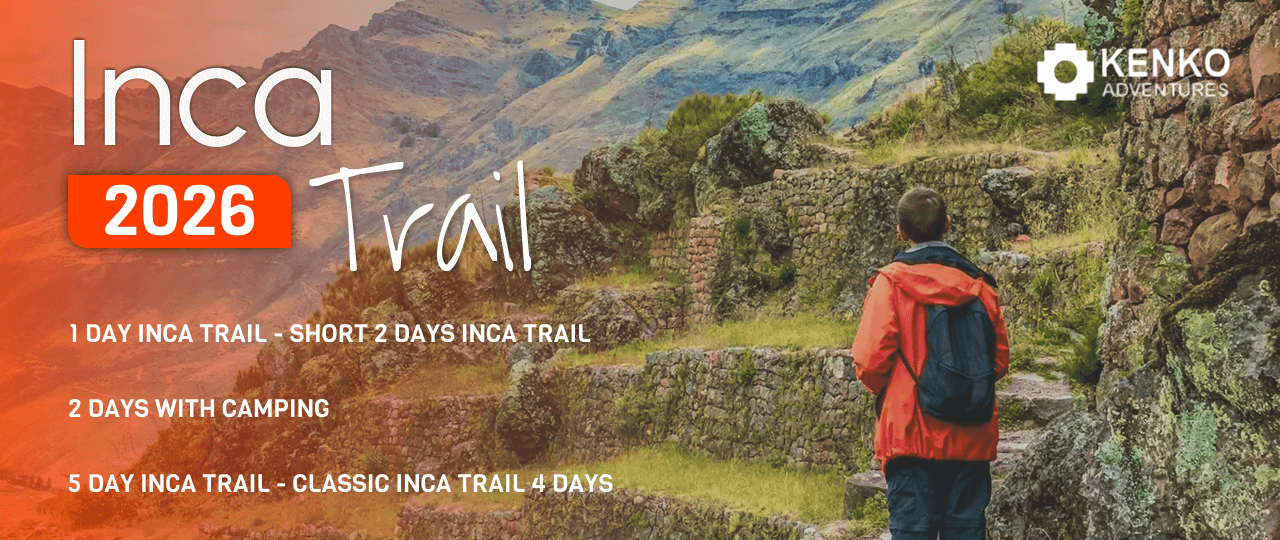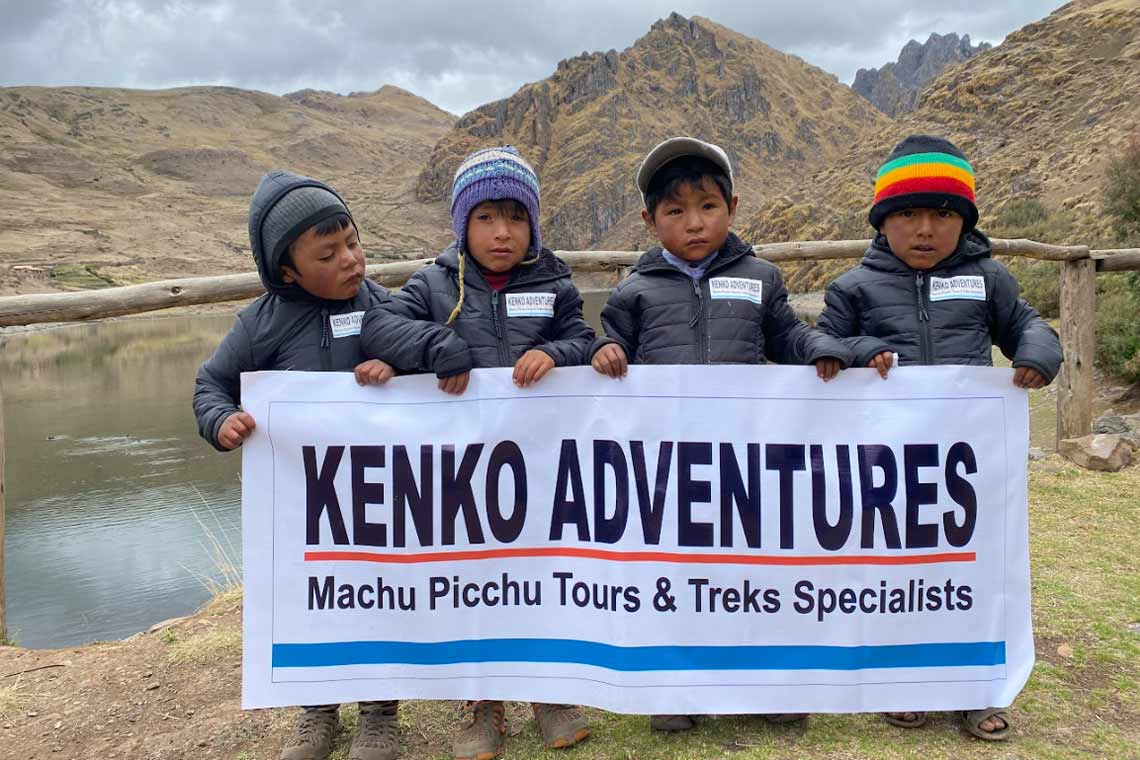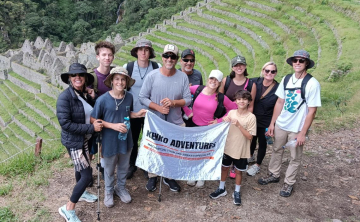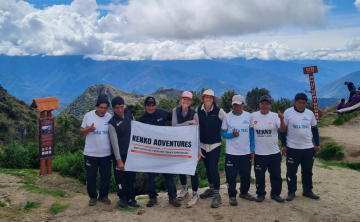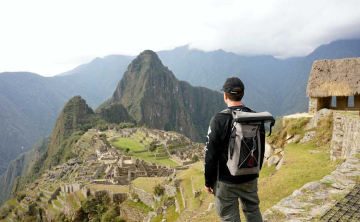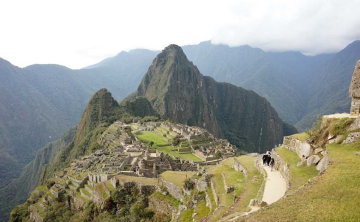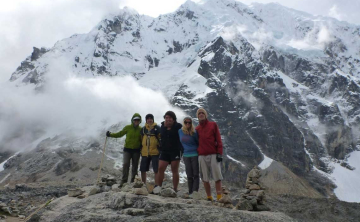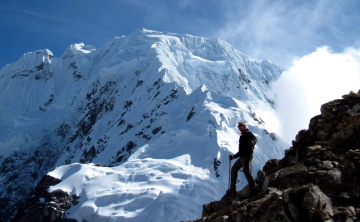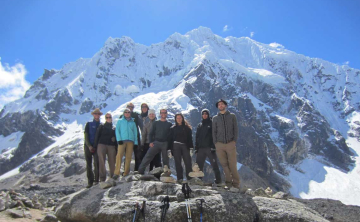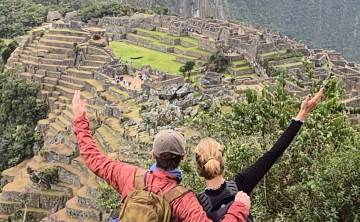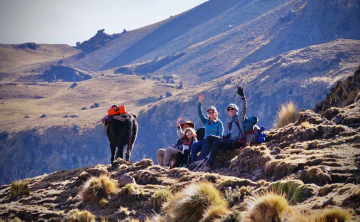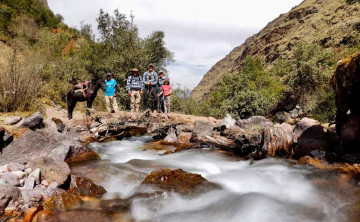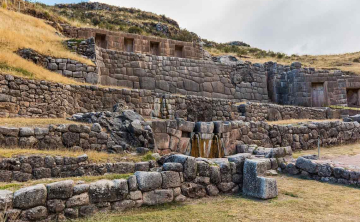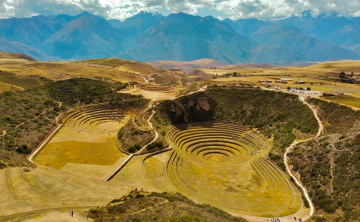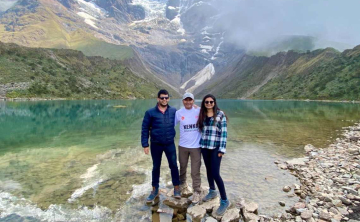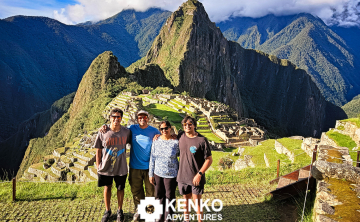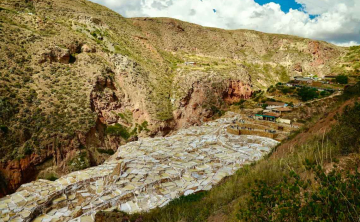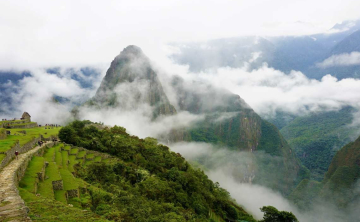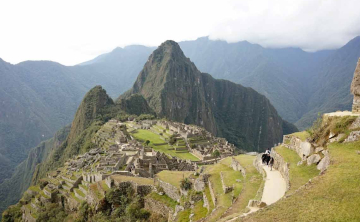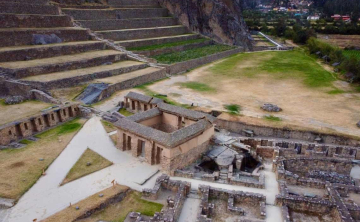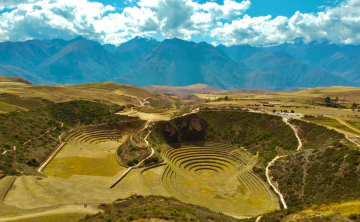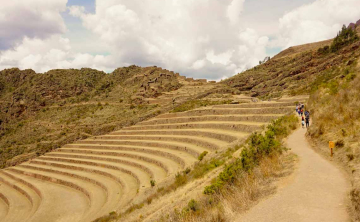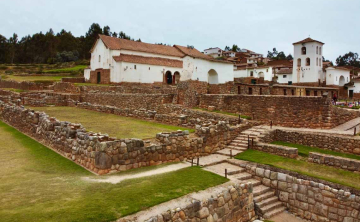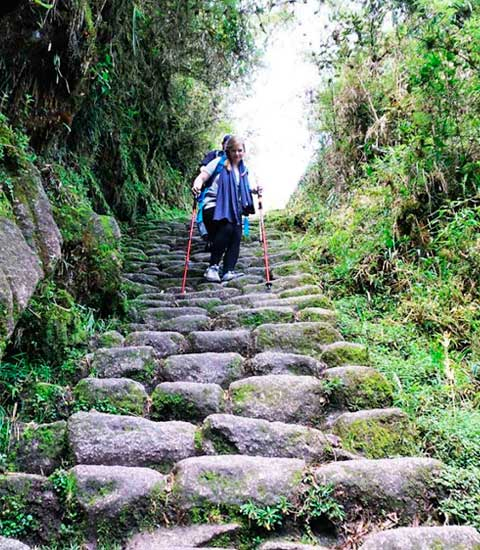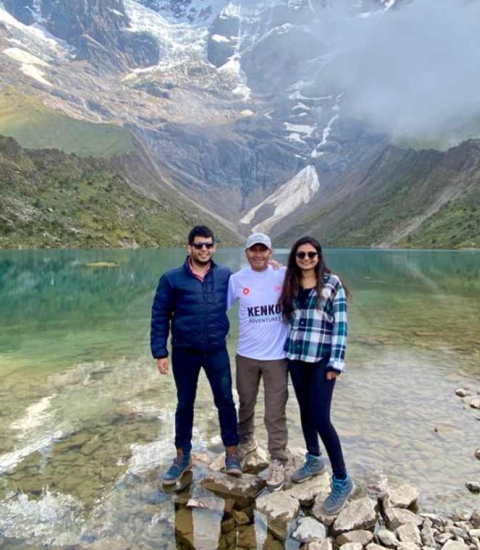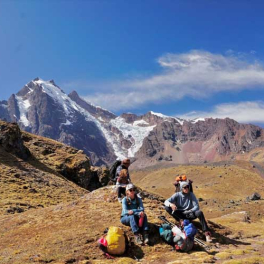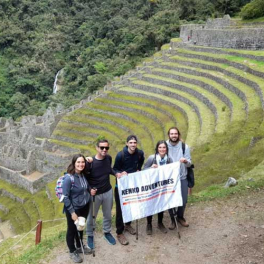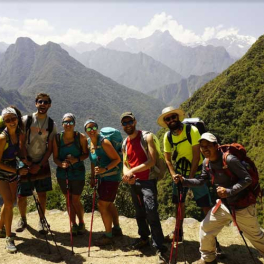Weather in Peru
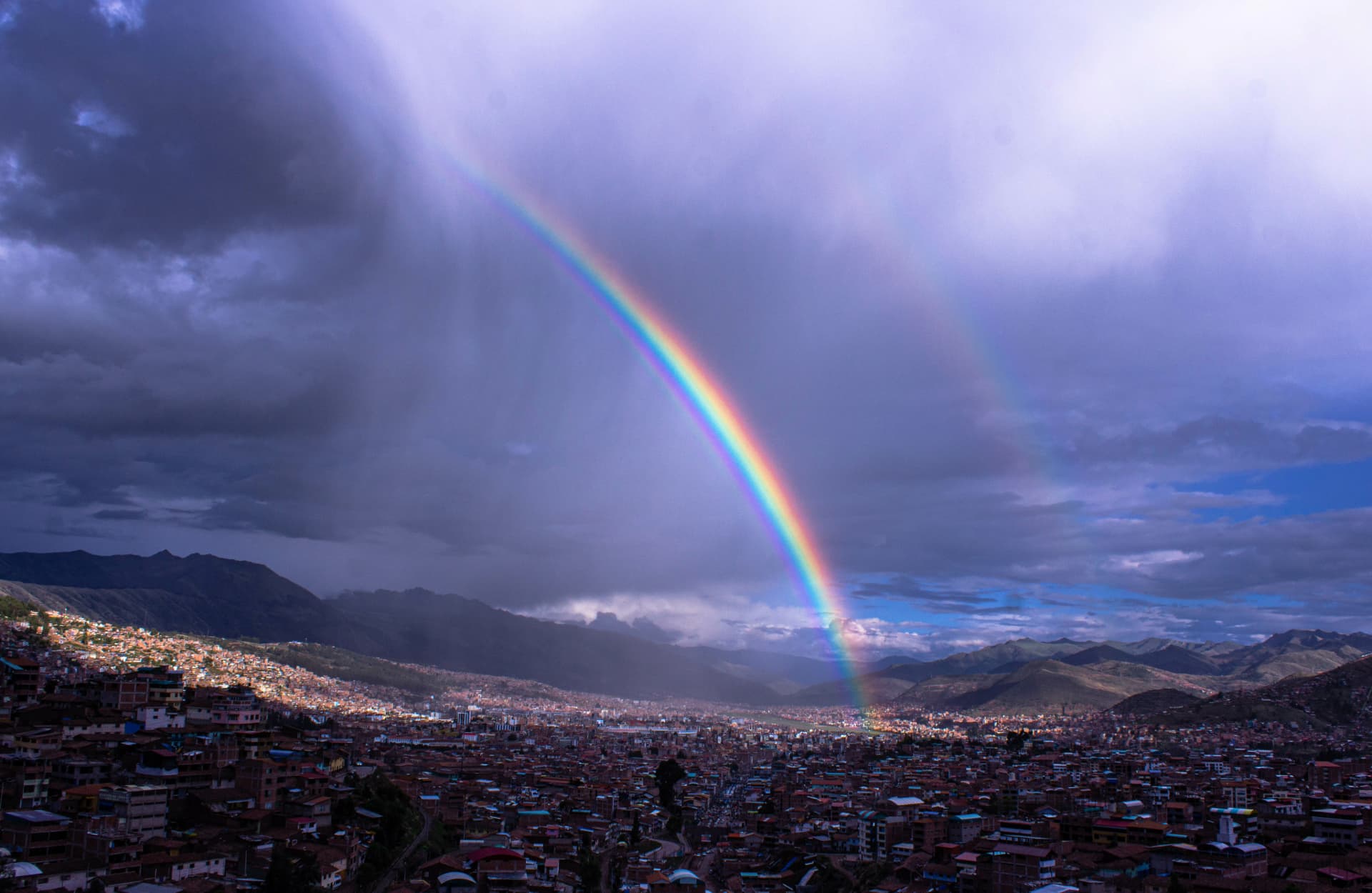
Peru's weather is crazy, and this has a explanation behind the pressence of the Andean mountain range and the proximity to the Line of Ecuador. These conditions enable a meteorological pattern that could let visitors experience exaggerated sun radiation to strenuous downpours. Visitors should be aware of these conditions since this could be important for their traveling plans.
Recently due to global warming's evolution, these sudden changes in the weather have turned more pronunciated and noticeable. Glaciers in the Andean mountain range have been melting while posing a threat to already complicated ecosystems that closes space for certain species while new ones appear in the Peruvian country.
Nevertheless, amidst this climatic variability, a distinct pattern emerges in our country, particularly in the Andean regions, where we predominantly experience two main seasons throughout the year. These seasons, characterized by their unique climatic features and ecological shifts, play a crucial role in shaping the rhythms of life for both locals and visitors alike. The weather in Peru not only influences daily activities but also shapes cultural practices and traditions.
Understanding the weather in Peru
The farming activity are heavily related with the seasonal cycles that are present in the Andes, the last and first months of each year are known due to the heavy presence of rain, by this time all the crops must be planted and ready for growth. And in yuxtaposition to this fact, the dry season is the perfect time for harvests, this is carried by local celebrations too and by the end of the harvesting farmers let the land "rest" for the rest of the year before beginning with planting once again.
Seasons in Cusco and troughout the Andes are considered two, dividing the year in a season of raining (self-explanatory) and one of "drying" due to the consistent presence of the sun, radiation in Cusco increases considerably, so having a sunscreen is always recommended.
You might also want to check out: What were the incas known for?
How Peru’s geography influences its climate
The weather in Peru is deeply shaped by the country’s unique geography. Despite being located in the tropics, Peru has dramatic variations in altitude from sea level on the coast to high Andean peaks and Amazon lowlands which means that temperatures, rainfall and seasons change significantly from one region to another.
Additionally, the presence of the cold Humboldt Current along the Pacific coast, combined with the towering Andes mountain chain, blocks moist air and creates a delicate interplay of dry deserts, alpine zones and humid jungle. These geographic features are fundamental to understanding “weather in Peru”.
The three main climate zones in Peru
In simplified terms, the weather in Peru can be broken into three major zones: the coastal region (costa), the Andean highlands (sierra) and the Amazon rainforest (selva). Each has distinct climate characteristics. On the coast you’ll find mostly arid or semi‑arid conditions; in the highlands you’ll encounter mountain climatic patterns; and in the Amazon the weather is tropical and humid.
The implication is that when you talk about “weather in Peru”, you cannot treat the country as having one single climate. A traveler must consider which zone they’re visiting because the expected weather conditions will differ dramatically. For example, a beach day on the coast may be very different from a trek in the Andes or a jungle expedition in the Amazon.
Seasonal variations: dry vs rainy season
Another important aspect of the weather in Peru is the seasonal variation, especially in the highlands and the jungle. For many areas, there is a clearer dry season and a rainy season. In the Andean highlands, for instance, the dry season tends to run from around May to September, with clearer skies and colder nights, whereas the rainy season usually occurs between November and March, bringing afternoon storms and green landscapes.
In the rainforest and Amazon regions the concept of dry vs rainy is less sharply defined, but even there rainfall increases significantly in certain periods and may impact travel plans. Thus, understanding the seasons is critical when planning a trip with respect to “weather in Peru”.
Dry Season: We consider the dry season from the end of April until the end of September, in this period the first rains will start. For this reason this is the best time to visit our region and our amazing Machu Picchu and also avoid any inconveniences.
Rainy Season: This season starts on October until the end of April approximately, so during this time it is advised to all of our visitors to pack their belongings into waterproof bags, as in our region it can be sunny the first 2 hours and then have a heavy rain.
You might also want to check out: 20 fascinating facts about Inca Culture
Weather in Peru by region
The weather in Peru changes dramatically depending on the region you visit. From the dry desert coast to the towering Andes and the humid Amazon rainforest, each zone has its own unique climate. In this section, we’ll explore what to expect in Peru’s three main regions the coast, the highlands, and the jungle so you can plan accordingly.
Coastal region: Lima, Paracas and beyond
On the Peruvian coast, the weather is generally mild, dry and stable for much of the year. For instance, in the central coast around Lima the average temperatures hover around mid 20 °C (about 75 °F) during the warm summer months, and rainfall is minimal.
However, despite being in the tropics, the coast experiences phenomena like the garúa (marine fog) during winter months (June to September), which keeps skies grey and temperatures cooler. Also, extreme events like El Niño can dramatically affect coastal weather with unusual rainfall and flooding.
Andean highlands: Cusco, Arequipa, and Puno
In the Andean highlands of Peru, the weather becomes more variable and altitude plays a crucial role. Daytime temperatures may feel pleasant, but nights can be very cold, and weather can change rapidly. For example, in the region of Cusco, temperatures can drop to near freezing in some areas, especially at higher elevations.
Rainfall is also more concentrated in specific seasons: during the wet season heavy afternoon showers are common, and during the dry season skies are clearer but nights chill significantly. Travelers must prepare for both sunshine and potential precipitation when visiting the Andes.
Amazon rainforest: Iquitos, Puerto Maldonado and surroundings
In the eastern lowlands, where you find the Amazon rainforest, the weather in Peru takes on a tropical character: warm to hot temperatures year round, high humidity, and substantial rainfall. In regions near Iquitos for example, annual rainfall can reach around 2.8 metres.
Here, even the “dry” season still sees frequent showers, and the high humidity means that heat is felt more acutely. If you plan to travel through the jungle part of Peru, you must account for humid conditions and use weather‑appropriate clothing and gear.
Best time to visit Peru depending on the weather
Choosing the right time to visit Peru largely depends on your destination and activities. Whether you want to enjoy the beaches, trek through the Andes, or explore the Amazon, the weather in Peru plays a major role. This section will guide you through the best times to visit each region based on seasonal weather conditions.
When to visit the coast for sunshine and beaches
If your focus is coastal Peru and you’re looking for sunny, beach‑friendly weather, the summer months (December to March) are usually your best bet. During this time the coast tends to be warmer and clearer, ideal for beach days and outdoor exploring.
That said, if you prefer cooler, less intense sun and maybe less crowded beaches, the shoulder months might also be worth considering. It’s wise to check local conditions since coastal fog or marine mist can still occur and affect visibility and experience.
Ideal months for trekking in the Andes
For trekking in the highlands of Peru, including popular destinations like the Inca Trail, the optimal time is typically during the dry season — from around May through September. Clear skies, lower risk of rain and more stable trails make it a preferred window.
However, nights will be colder and you’ll need to prepare accordingly. The wet season (November to March) brings lush green landscapes and fewer tourists but also higher risk of rain, slippery trails and possible disruptions. Weighing your priorities (weather stability vs scenery vs crowds) is part of planning your “weather in Peru” strategy.
Visiting the Amazon with minimal rain
In the Amazon region of Peru, the concept of minimal rain is relative: the jungle is always humid and rainy to some extent. But if you want comparatively drier conditions, the period between June and September often sees slightly less rainfall and better access to trails and lodges.
Blog Life Expeditions
Still, traveling to the Amazon means embracing rain, preparing for humidity, and expecting showers even when conditions seem favourable. It’s part of the appeal but also part of the logistic challenge when considering weather in Peru.
You might also want to check out: Inca calendar: Solar alignments at Machu Picchu
Monthly weather in Peru
Peru’s weather varies not only by region, but also by month. Understanding what conditions to expect throughout the year helps travelers pack properly and schedule their trips more effectively. In this section, we break down the weather in Peru month by month, highlighting seasonal trends and regional variations.
Weather in Peru in the summer months (December to March)
During the summer months in Peru — which correspond to December through March in the southern hemisphere — many parts of the country experience warmer temperatures, higher humidity (especially on the coast and in the jungle) and increased rainfall in certain regions like the Andes slide towards their wet season. For instance, coastal areas warm up and beach activity becomes more favourable.
At the same time, in the Andean highlands this period often marks the beginning or height of the rainy season: frequent afternoon thunderstorms, cloudy skies, and potential trail disruptions for trekkers. Understanding this helps you decide how the “weather in Peru” will affect your itinerary.
Weather in Peru during the dry season (May to September)
In the dry season for many highland and mountain regions (from around May to September), weather in Peru tends to be more stable: clearer skies, less rain, and better conditions for mountain and adventure travel. The coast is still comfortable and the Amazon slightly less rainy.
Even so, nights in the highlands can be cold and strong insolation (sun at high altitude) can make day conditions feel deceptively warm. If you’re travelling during these months, plan for both melting sun and cold nights to truly align with expected weather in Peru.
Transitional months: April, October and November
The months of April, October and November act as transitions between the main seasons — for example moving from wet to dry or vice versa. During these times, weather patterns can be less predictable: you may catch clear days or sudden showers, and conditions may vary regionally.
When planning your trip around these transitional months, you should pay extra attention to local forecasts, check trail conditions, and build flexibility into your plans — especially when considering how the “weather in Peru” may shift unexpectedly.
How the weather in Peru affects travel plans
The diverse weather in Peru can significantly influence your travel experience. From what to pack to which areas are accessible, climate and weather conditions determine many travel decisions. This section provides practical tips for adapting to Peru’s changing weather and staying safe during your journey.
Packing tips for Peru’s diverse climate
Given how variable the weather in Peru can be packing smart is critical. For the coast you’ll likely want lighter clothing, sun protection and comfortable beach wear. But for the highlands expect cold nights, warm days, strong sun and possibly rain. Layers are your friend.
In the jungle terrain, waterproofs, mosquito protection, quick‑dry clothing and high humidity considerations are important. All of this must be balanced when you plan based on “weather in Peru” so you’re ready for multiple climate zones.
Altitude and climate
Altitude is a special factor when discussing weather in Peru. In the Andean highlands, you’ll find cooler temperatures, thinner air and a greater exposure to sun and cold swings. Even if the daytime weather seems mild, nights may drop significantly.
Machupicchu Terra
Travelers need to allow for acclimatization, recognize how weather interacts with altitude (e.g., cold nights, sun glare, possible rain) and plan their activities accordingly. Understanding “weather in Peru” includes not just temperature or rainfall but the altitude’s effect on comfort and safety.
Festivals and events by season
The weather in Peru influences when festivals, cultural events and outdoor activities take place. For example, the dry season in the Andes is often chosen for major trekking events and outdoor celebrations because conditions are more reliable.
If you plan your trip around a cultural event, check how the seasonal weather might impact access, comfort and altitude exposure. When optimizing content for “weather in Peru”, this connection between weather, travel timing and events can help readers plan better.
You might also want to check out: A guide to hiking to the Sun Gate (Inti Punku)
Climate change and the weather in Peru
In recent years, climate change has begun to affect the traditional patterns of weather in Peru. Shifting temperatures, glacier loss, and more unpredictable rainfall are just a few of the impacts being felt across the country. This section explores how climate change is altering Peru’s environment and what it means for locals and travelers alike.
Rising temperatures and glacier retreat in the Andes
Climate change is altering the weather in Peru in significant ways. For example, in the Andean region, glaciers are retreating, which not only affects water availability but also alters local microclimates. As temperatures rise and precipitation patterns shift, the traditional “weather in Peru” norms are being challenged.
These changes mean that areas that were once reliably “dry” or “stable” may now see more variability, or experience extreme weather events more often. For travelers and residents alike, understanding that the “weather in Peru” is evolving is key for planning and awareness.
Impact on ecosystems and local communities
Altered weather patterns affect ecosystems: from the Amazon, where rainfall and river levels may change, to the highlands, where temperature changes affect agriculture and livelihoods. Communities in Peru are feeling the effects of shifting weather, which underscores how “weather in Peru” has human, cultural and ecological dimensions.
For tourism, this means routes may change, seasons may shift and what was once considered a predictable “weather in Peru” cycle may become more dynamic. This adds complexity to travel planning but also offers new perspectives for content around climate savvy travel.
How tourism can support sustainable practices
Recognizing how weather in Peru is affected by global changes leads to opportunities for sustainable tourism. Travellers can choose options that minimize impact, support local adaptation and respect changing conditions. Highlighting responsible travel in the context of “weather in Peru” strengthens your blog’s value and relevancy.
When readers search “weather in Peru”, providing them with not just standard forecasts but insight into climate change, environmental impact and best practices makes your content more authoritative and forward‑looking.
Final tips for dealing with the weather in Peru
Since “weather in Peru” varies so much by region, using good tools and resources is valuable. Encourage readers to check localised weather apps, consult trail and altitude‑specific forecasts, and keep an eye on regional alerts (for example during rainy seasons or for high‑altitude cold snaps).
By preparing in this way, travelers can adapt more easily if the weather in Peru deviates from expectations — and you reinforce your blog’s role as a trusted guide.
We know that there are extreme climates worldwide, but this must not stop us from our longing and desire to explore the world, to discover marvelous cultures and interact with them. Be welcomed to PerĂş and Machu Picchu.


